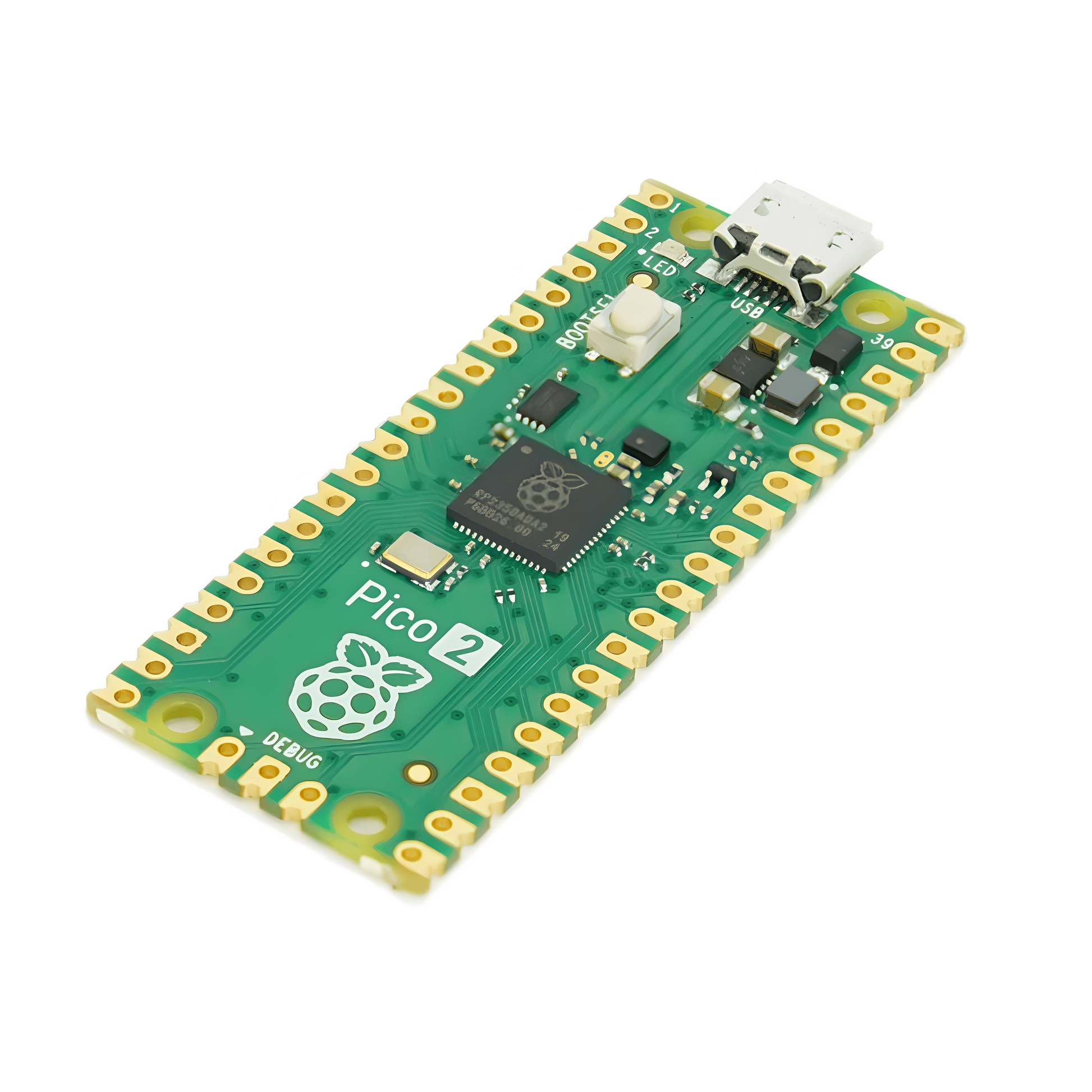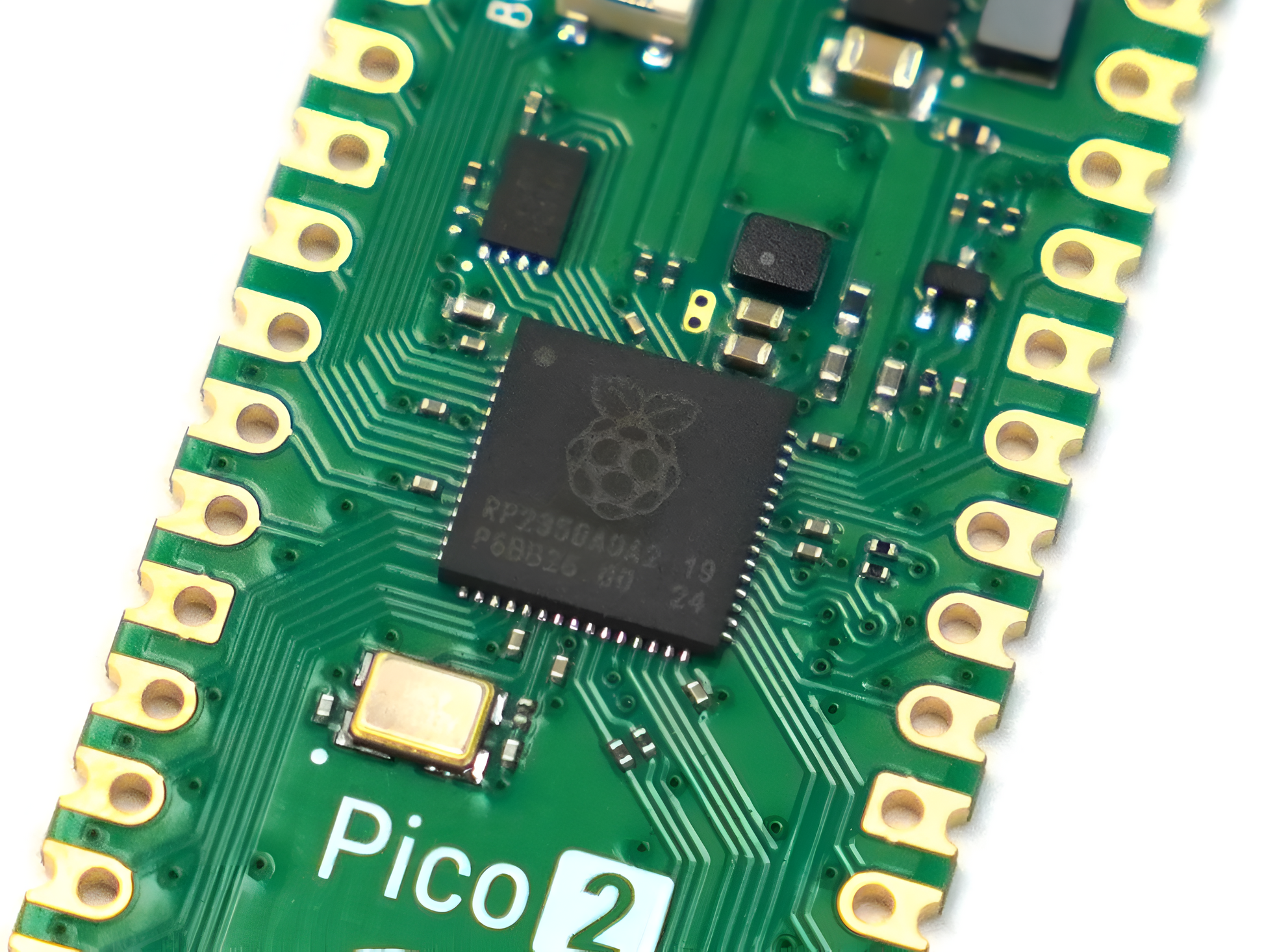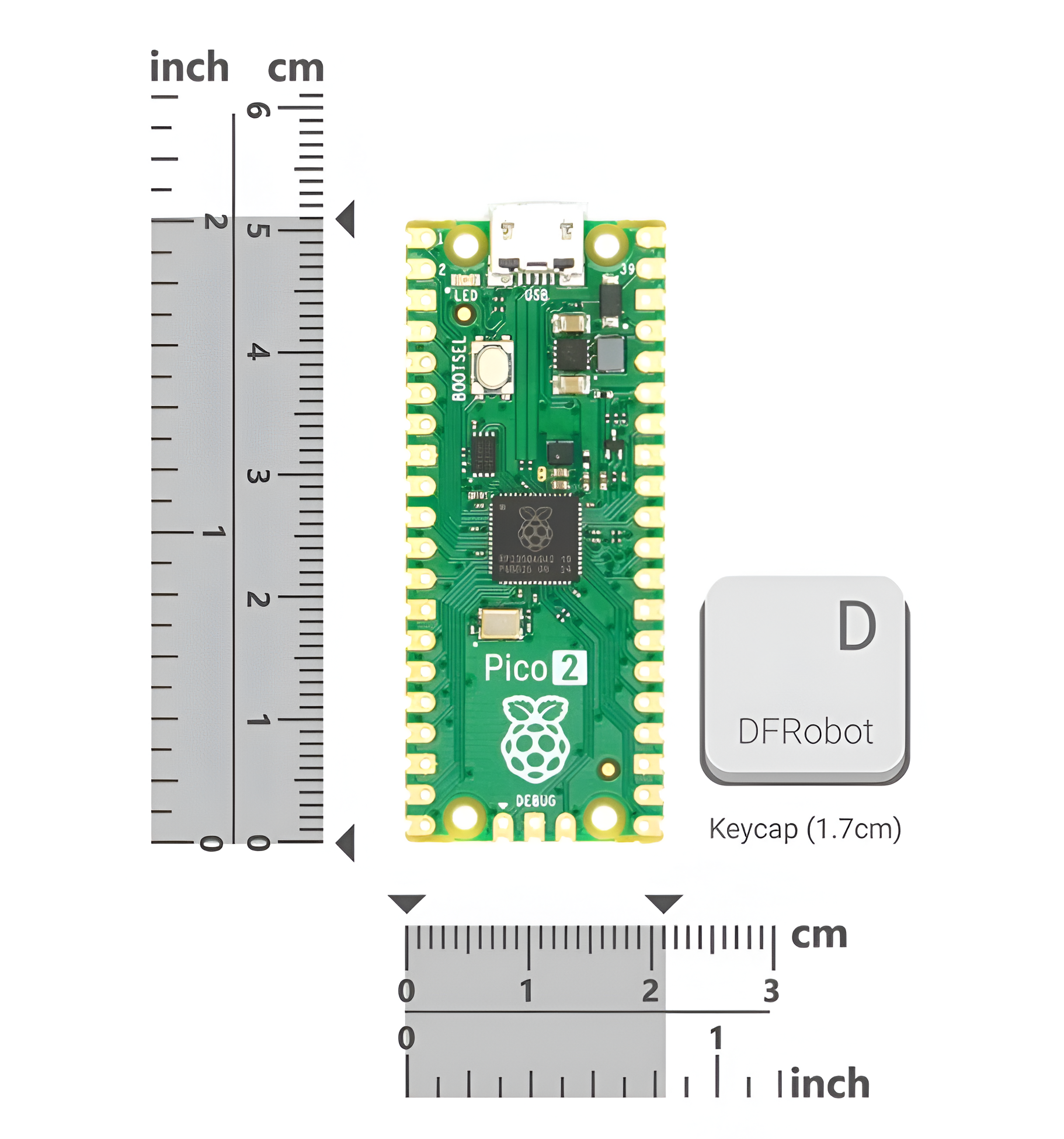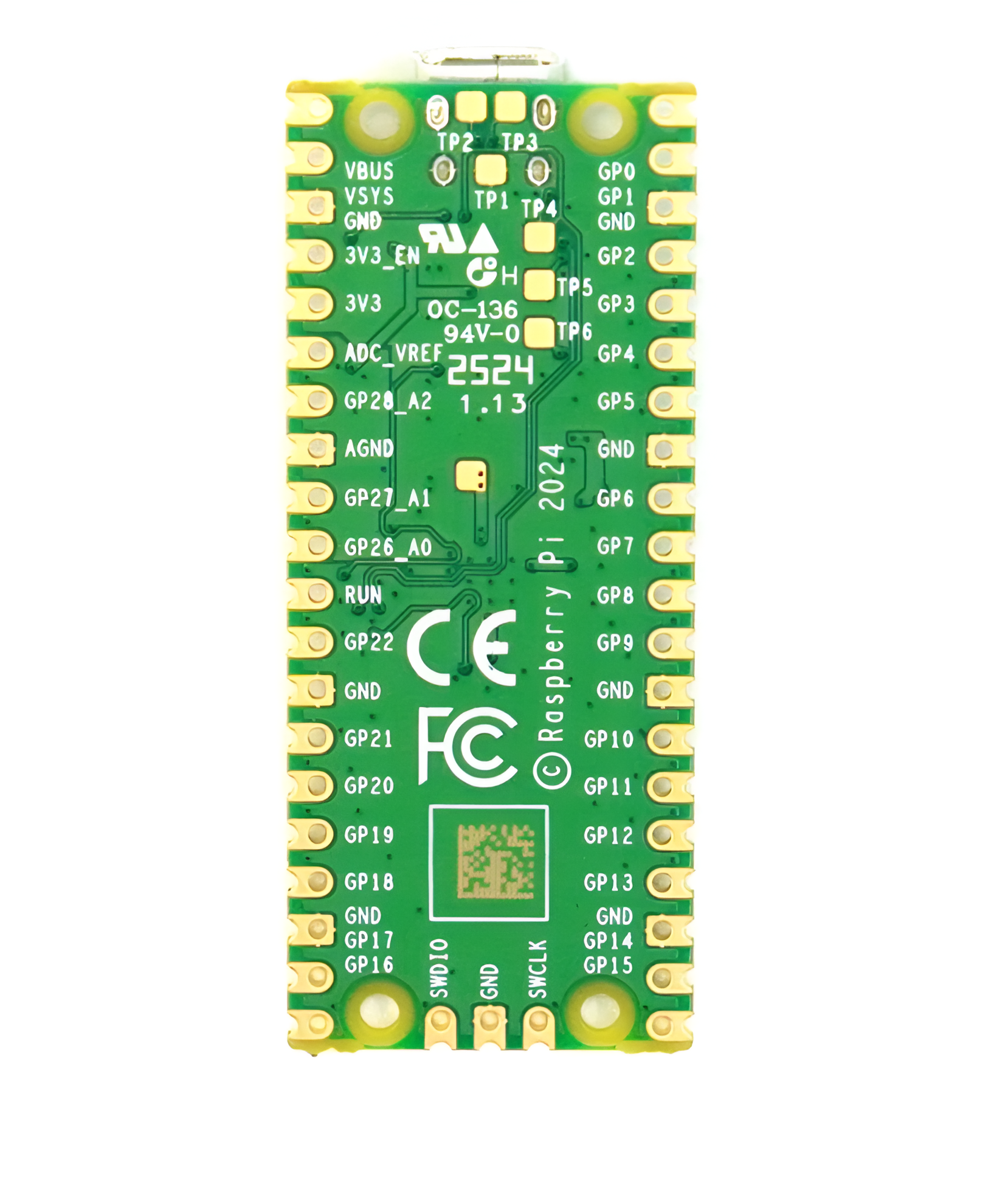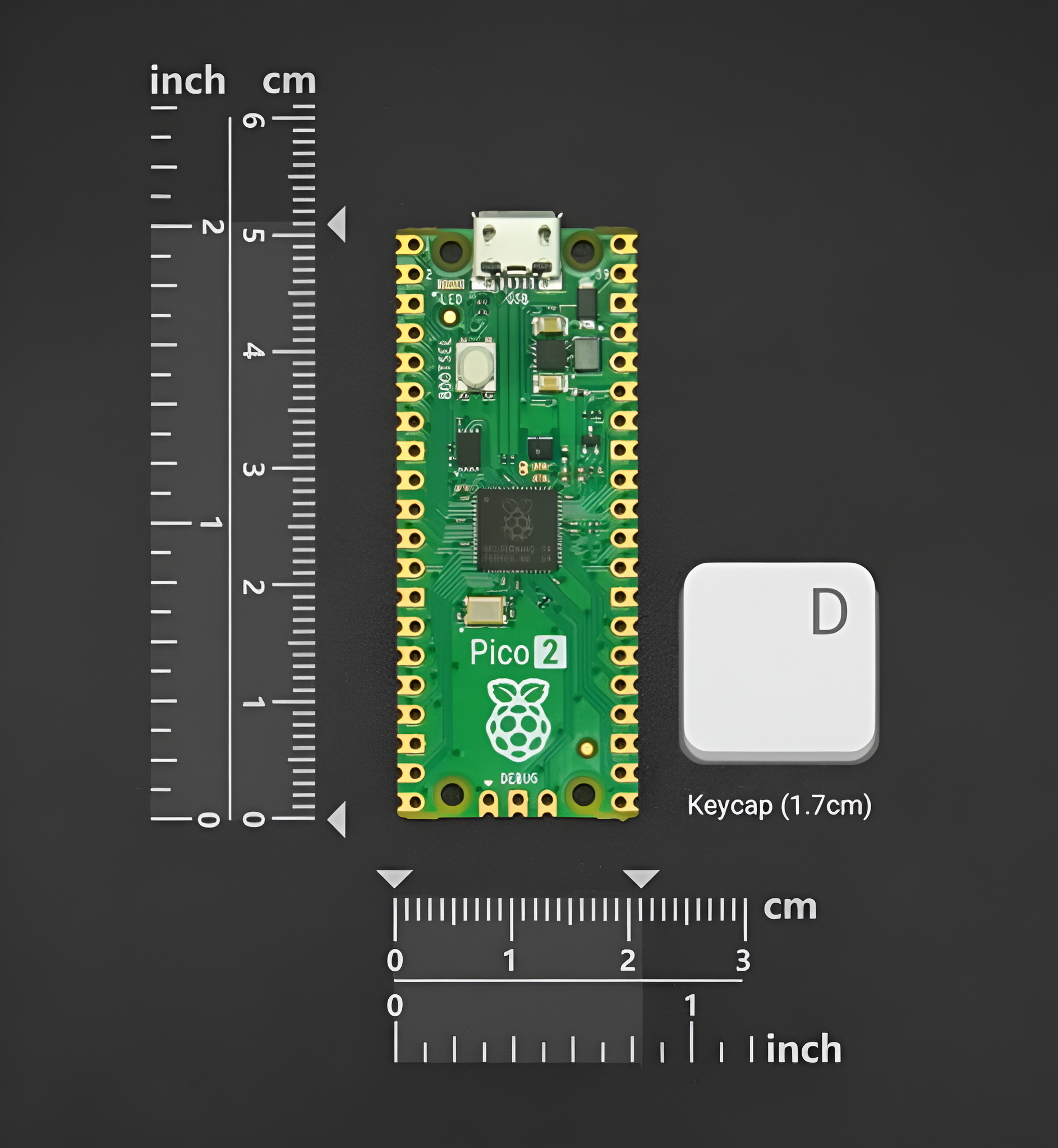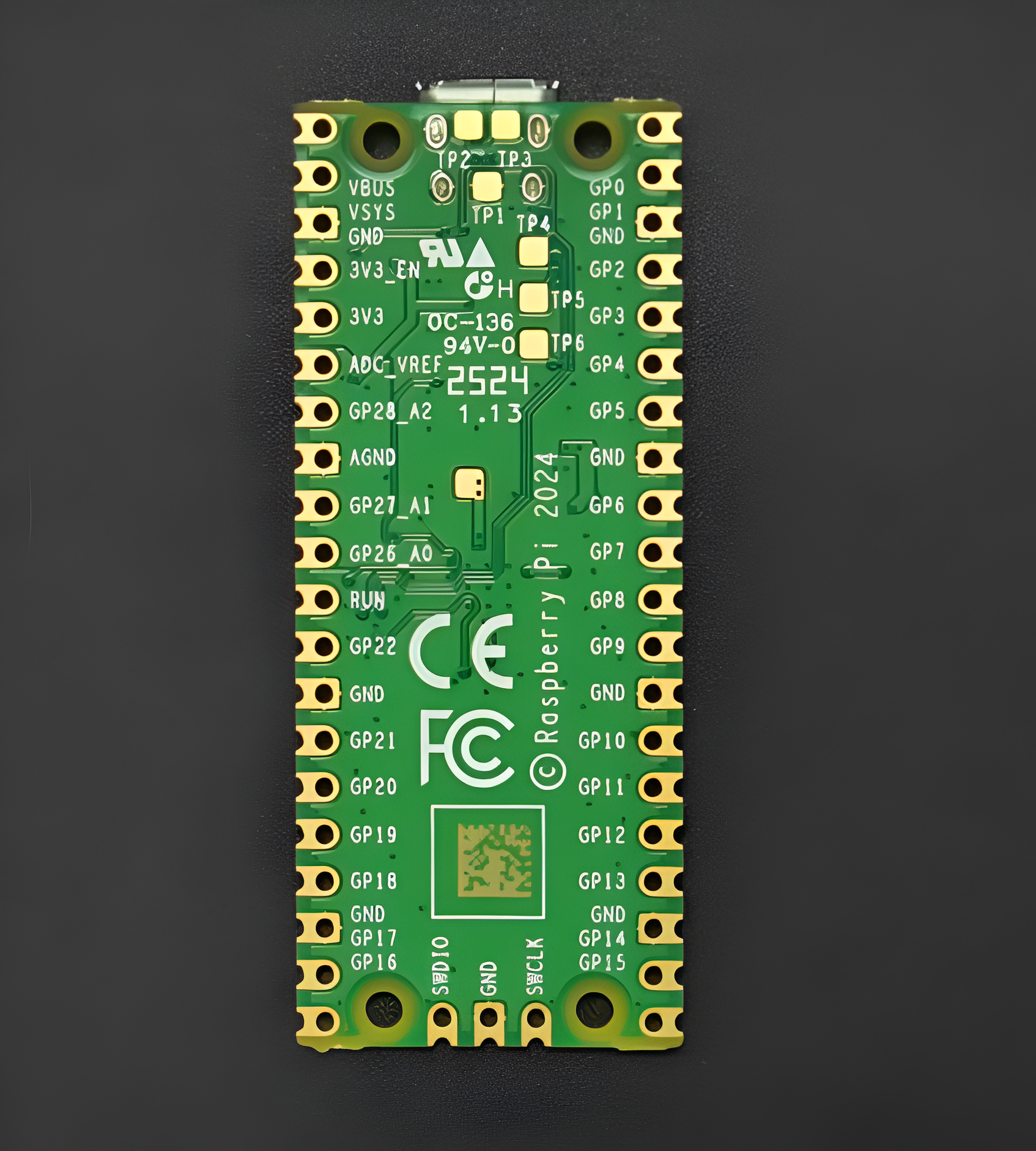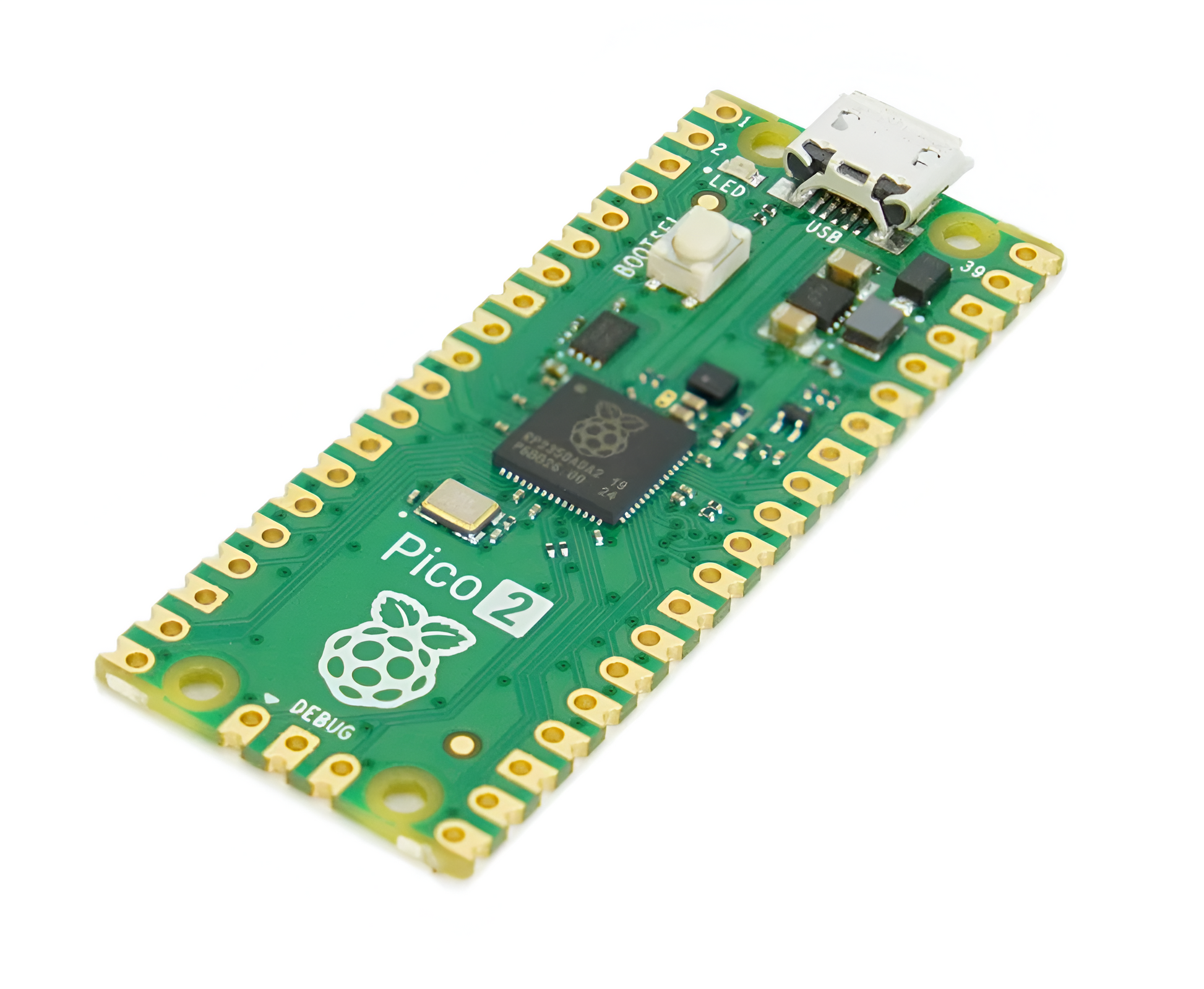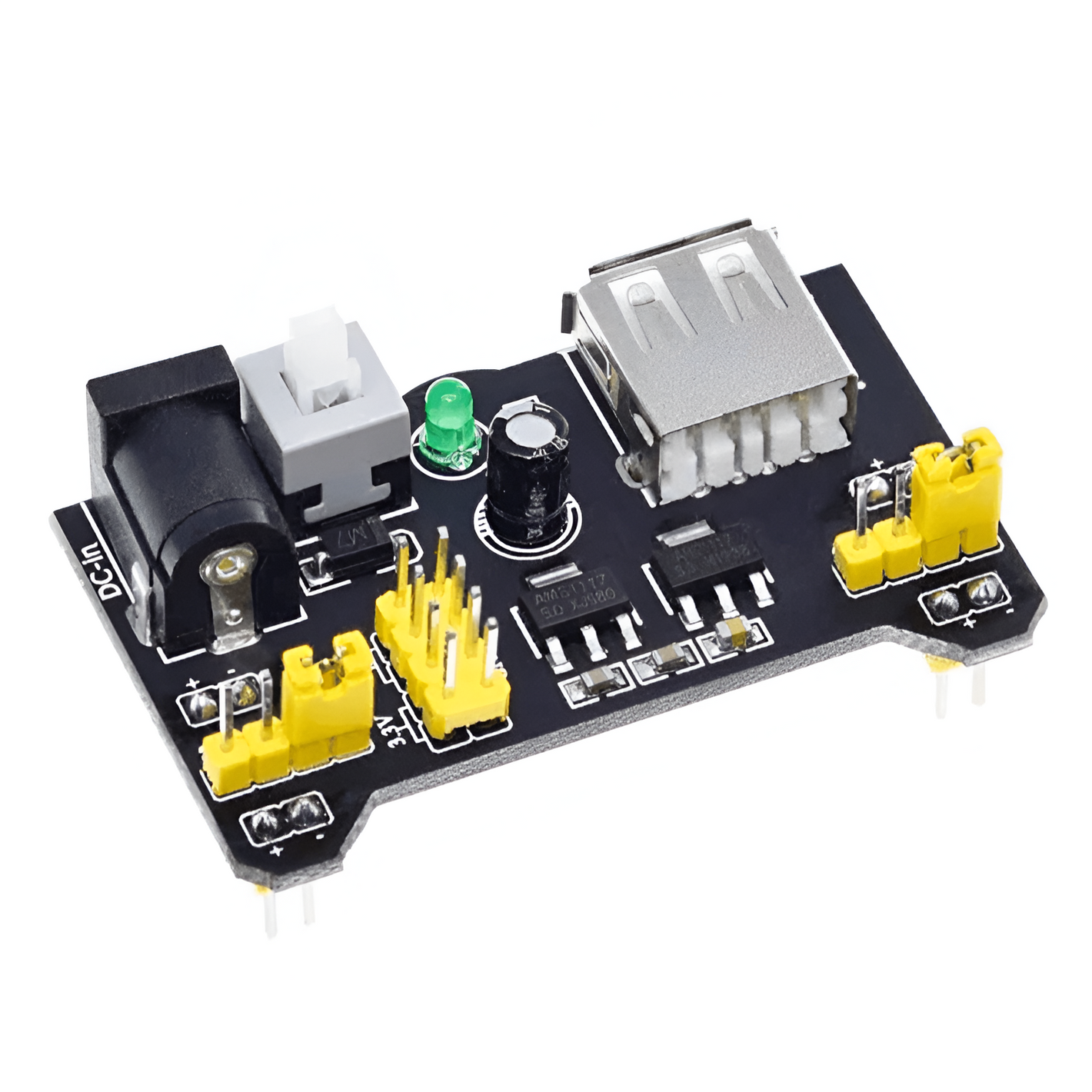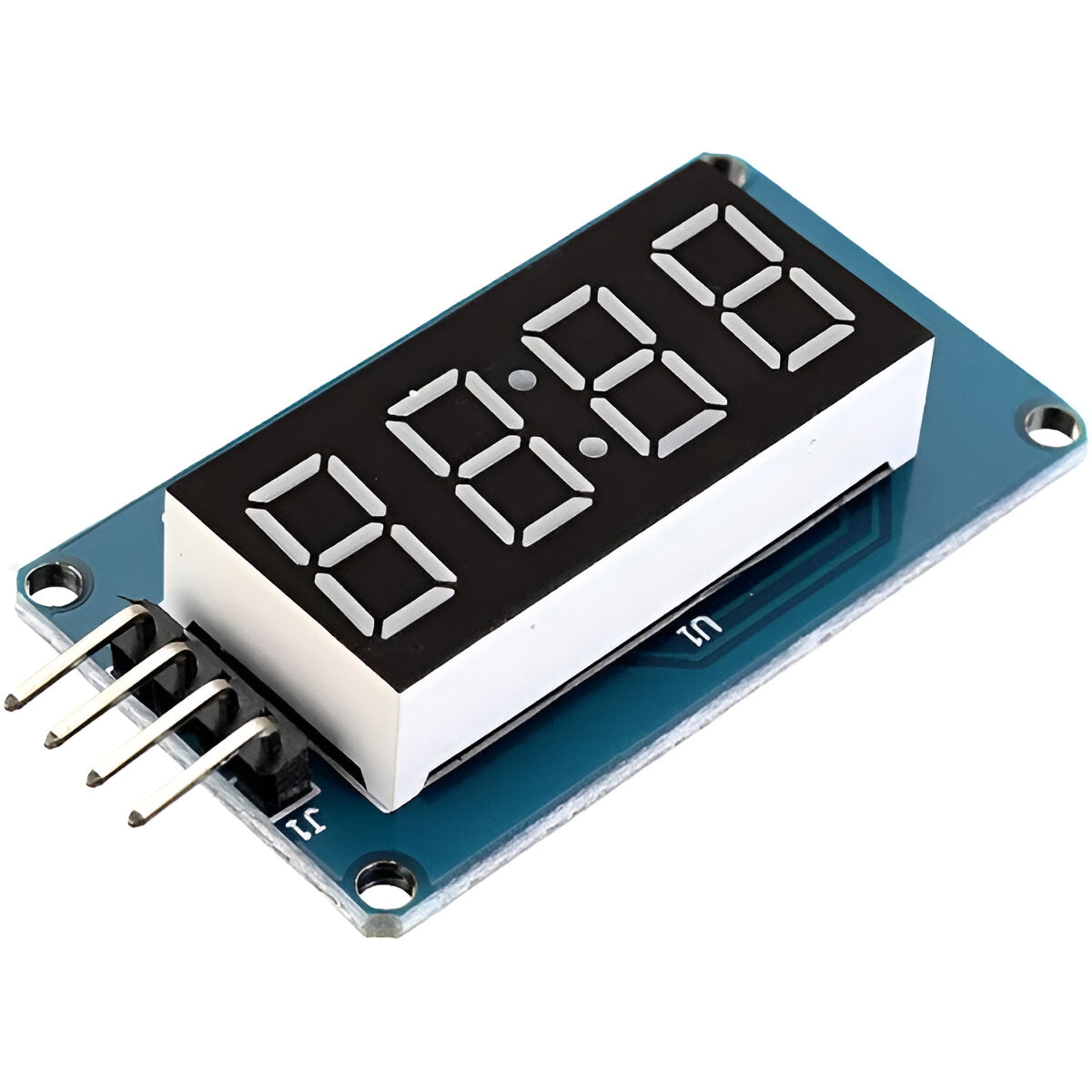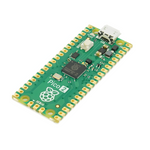
DFROBOT DFR1190
The Raspberry Pi Pico 2 is a cutting-edge microcontroller that combines exceptional performance, security, and flexibility. Powered by the advanced RP2350 microcontroller, this next-generation board features dual Arm Cortex-M33 cores and Hazard3 RISC-V cores, delivering a significant boost in processing power and versatility. With comprehensive security features, including Arm TrustZone and hardware SHA-256 acceleration, the Raspberry Pi Pico 2 ensures robust protection for embedded systems. Its flexible interfacing capabilities, low power consumption, and extensive documentation make it a powerful solution for prototyping, education, and complex hardware integration.
Enhanced Performance
Equipped with dual Arm Cortex-M33 cores operating at up to 150MHz, Raspberry Pi Pico 2 offers a significant boost in processing power. The inclusion of the Hazard3 RISC-V cores provides developers the flexibility to experiment with different architectures.

Comprehensive Security
Built around Arm TrustZone for Cortex-M, the RP2350 microcontroller ensures robust security with features like signed boot support, hardware SHA-256 acceleration, and a true random number generator.
Flexible Interfacing
The second-generation Programmable I/O (PIO) subsystem and rich peripheral set allow for highly customizable interfacing with minimal CPU overhead, making it ideal for complex hardware integration.

Low Power Consumption
Manufactured on a 40nm process node, the RP2350 ensures low dynamic power consumption and offers a variety of low-power modes to support extended battery operation, making it suitable for portable and energy-sensitive applications.
Extensive Documentation
Comprehensive documentation and a polished MicroPython port ensure a smooth development experience, making Raspberry Pi Pico 2 accessible to both beginners and advanced users.

Specification
Security:
Arm TrustZone for Cortex-M8KB on-chip OTP memorySHA-256 hardware accelerationTrue random number generator (TRNG)
Interfacing:
30 GPIO pins, including 4 analog inputs2 UARTs, 2 SPI controllers, 2 I2C controllers24 PWM channelsUSB 1.1 controller with host and device support3 Programmable IO (PIO) blocks with 12 state machines
Power:
On-chip programmable LDO for core voltage2 on-chip PLLs for USB and core clocks
